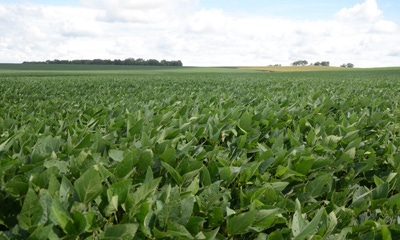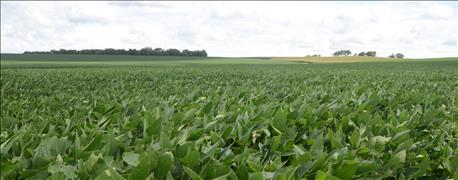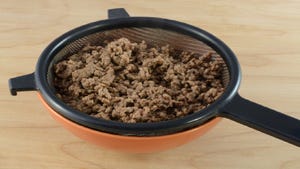
As the 2016 cropping season winds down, soybean growers have some important decisions to make for next year's cropping season — in particular, what soybean varieties they're going to plant next year.
Nathan Mueller, University of Nebraska Extension cropping systems educator, notes the most important thing is to do your homework. "The main thing is to try to use as much information as you have to make an informed decision," he says.
This means everything from seed dealer insight and data to plot tours to third-party trial data from nearby universities and FIRST (farmers' independent research of seed technologies) trials, as well as your own on-farm trial data and experience.

DO YOUR HOMEWORK: When it comes to soybean variety selection, Nathan Mueller notes it's important to do your homework. “When we're talking about the potential, yield differences can be as much as an 8- to 15-bushel yield difference. With current soybean prices, it's a $60-per-acre difference," he says.
Using information from third-party trials in regions with similar soils can be extremely beneficial when it comes to identifying varieties that consistently perform well in growing conditions similar to yours.
But it also takes knowing the history of your field and the disease pressure you're facing to select for specific disease resistances, and traits for resistance to specific active ingredients you need to control weeds, like waterhemp or marestail.
However, no two fields are the same, and Mueller notes it's important to not put all your money into a single variety. "One variety will not be the best match for your entire farm," he says. "Work with as many dealers as you want, but one variety is not probably going to cover the variability you have from field to field."
When it comes to planting different varieties, it's also beneficial to plant varieties with different maturity ratings, Mueller adds. "If you plant a range of maturities, a dry period at the beginning of August might impact an early-maturing more than late-maturing or late-planted [variety]. It's about spreading out your risk, because we know Nebraska weather can change drastically week to week," he says. "In the past couple years, those earlier-maturing varieties in Nebraska have yielded really well because they matched up with the weather."
The challenge with soybeans, Mueller notes, is it's harder now than it was 10 years ago, when growers purchased soybean seed by the bag like they do corn seed. "Now everything's in bulk containers. Depending on how many acres you're farming, it does make it harder to plant more varieties because it's more convenient to fill up a seed tender or bulk unit," he says. "So you've got to weigh convenience with your yield goals to make sure you're getting the right variety."
The main thing to remember, Mueller says, is it takes time to select the right variety and where it's going to be planted on the farm — or in some cases, within the field.
"When we're thinking about what varieties are going to perform best based on the data we have, and what fields we need to plant them on, it isn't just a half-day endeavor for a lot of producers," he says. "It really is a big deal. Because when we're talking about the potential yield, differences can be as much as an 8- to 15-bushel yield difference. With current soybean prices, it's a $60-per-acre difference."
"The thing is, if you look at cost per unit, there might only be a $5 to $8 difference between soybean varieties," Mueller adds. "You only need a bushel to cover that difference, and we're talking about a potential 8- to 15-bushel difference. It doesn't take that much time to do the best job you can."
About the Author(s)
You May Also Like






